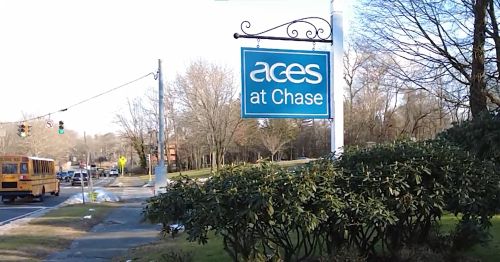-
Our Agency
- About Us
- Calendars
- Contact Us
-
Directions
- ACCESS
- ACES at Chase
- ACES International Preschool and Childcare Center
- ACES Transportation Services
- Center for Autism Spectrum and Developmental Disorders
- Central Office
- Educational Center for the Arts
- Educational Technology
- Little Theatre on Lincoln Street
- Mill Road School
- Network Services
- Staff Development / Administration
- Village School
- Whitney High School North
- Wintergreen Interdistrict Magnet School
- Human Capital Development
- Education Foundation
- News / Press
- Publications
- Request for Proposals
- Employment
- Events & Workshops
- Referrals
-
Schools & Programs
-
Special Education Schools
- Center for Autism Spectrum and Developmental Disorders
- Mead Elementary School
- Mill Road School
- Village School
- Whitney Academy EXPLORE & CREATE
- Whitney High School North
-
Magnet Schools
-
ACES at Chase
- About Us
- ACES at Chase: History & Origins
- Admissions
-
Student and Family Portal
- Breakfast and Lunch Menus
- Cancellations, Delays, and Early Dismissal
- Community Health Center
- Dress Guidelines
- Family Teacher Organization (FTO)
- Health Office
- Principal's Corner
- Monitoring Grades: PowerSchool Parent Portal
- Quick Links
- Student Handbook
- Summer Reading and Math
- Technology & Digital Citizenship
- Virtual Suggestion Box
- Document Library
- Contact Us
- Back to ACES
- Educational Center for the Arts
- Wintergreen Interdistrict Magnet School
-
ACES at Chase
- Alternative Education
- ACES Early Head Start
- ACES International
-
ACES International Preschool and Childcare Center
- About Us
- ACES International Preschool and Childcare Center Donations
- Admission Interest
- Meet the Staff - Newtown Center
- Meet the Staff - Woodbury Center
- Calendar
- Contact Us - Newtown Center
- Contact Us - Woodbury Center
- Family Portal
- Enroll Now: ACES International Preschool and Childcare Center Newtown Location
- Back to ACES
- ACES Open Choice
- Family and Community Engagement
- Magnet School Parent Choice
- School-Based Services
-
Special Education Schools
-
Services
- ACCESS Adult Vocational Services
- ACES Insurance Collaborative
- ACES UP Renewable Energy Solutions
- Alternate Routes to Certification
- Business Partnership Opportunities
- Center for Safe Schools
- Clinical Services
- Educational Technology
- Facility Rental
- Fingerprinting
- International Programming
- Marketing and Communications Services
- Network Services
- Professional Learning
- Regional Education Councils
- Regional Special Education Transportation
- Speech and Language Services
- Transportation
- World Language Services
- Find
« Back to News List
« Back to News List
Mainstream education and autism spectrum disorder
November 16th, 2017

Mainstream education and autism spectrum disorder

October 31, 2017 03:45PM
A new government survey of parents reports that 1 in 45 children, ages 3 through 17, have been diagnosed with autism spectrum disorder according to AutismSpeaks.Org.
This has a profound impact on mainstream education. Here are some of the biggest challenges that face teachers, parents and students with ASD and what is being done to help.
What is ASD?
Autism spectrum disorder is an umbrella term that covers a scattering of lifelong neurodevelopmental conditions. ASD symptoms and characteristics greatly vary from person to person but usually challenge three main areas: communication, social interaction and ritualistic or repetitive behaviors. Students on the autism spectrum may also exhibit differences in sensory processing, emotional reactions and interpretations.
How ASD challenges mainstream education
The role teachers and parents play in supporting the developmental needs of students with ASD is vital. Students who behave outside the norm of cognitive, social, behavioral boundaries require a level of expertise that is found lacking within many school districts. Teachers are called on to assimilate high-functioning and highly intelligent students with autism with the rest of the class.
To successfully meet the specific needs of each student affected by autism, teachers must reformat their classroom to the unique learning and development requirements of each child. The expertise students with ASD deserve can be costly to districts, but shouldn’t be glossed over because each child deserves equal treatment. Teacher adaptation to the different learning styles of each child is paramount, but often hard to establish.
Supporting students with ASD, teachers and parents
With the rise in students with ASD, programs such as Area Cooperative Educational Services are getting to work to provide much-needed resources and support to school districts, communities, parents and children. ACES partners with local school districts to extend their capacity and expertise to allow for better educational opportunities for children that learn differently than the majority of their classroom peers.
ACES is working to establish intensive educational programs within local school districts that are both cost-effective and not socially isolating. The goal is not to displace students with ASD, but to keep them integrated, even though they may have contrasting educational needs to those of their peers. ACES offers a team of richly experienced board-certified behavior analysts, behavior technicians, behavior support staff and ABA trainers with a variety of knowledge and expertise in the delivery of behavior analytic services.
Services designed to assist school districts
ACES Behavior Services and Autism Programs offers an array of services designed to assist school districts, communities and families in supporting children presenting complex behavioral and instructional needs. These include: staff/parent training; program development and evaluation; staff supervision and support; case consultation; classroom and behavior management; student assessment; instructional strategy and data system design; and home-based services. Efforts in these areas provide teachers, parents and students with ASD the support base they need for success.
Collaboration, communication and defining expectations
Educational resources and lesson planning for students with autism encompasses various levels of skill development. Collaboration between parents and educational teams about specific child needs, behaviors and communication skills is essential for success. Parents should clearly define their expectations to educators and empower them with techniques that work at home. Open communication between school staff and parents can lead to better goal-setting and evaluation of a students’ progress.
Academic goals must meet the needs of all children
The Autism-Society.org emphasizes the need to match educational goals and programs to students’ individual needs. Lesson plans need to be flexible and regularly re-evaluated for effectiveness. As the Autism Society’s Options Policy states: “Each family and individual with autism should have the right to learn about and then select the options that they feel are most appropriate for the individual with autism.”
Incorporating students on the autism spectrum isn’t about isolating them from their peers but integrating them while adapting to their specific needs just as you would any other child. Teachers need to abandon cookie-cutter teaching styles and hone in on how each child learns and responds individually. How teachers respond and encourage students with ASD will influence how peers respond and encourage students with ASD. The need for equal treatment will help students with ASD not feel segregated from their peers.
Fortunately, support for autistic children is improving and insurance companies like Anthem, Aetna, Cigna and others are now covering home-based services for autistic children and partnering with educational agencies such as ACES to enable those services to be more readily available to children and families.












